Last Updated: February 14th, 2020
In this post, we will be showing you the best portrait photography equipment for beginners.
The photography gear we have selected comes from our experiences as professional photographers. Over the years, we have used many different pieces of equipment to suite the needs of our clients. While our current portrait photography setup is on the more expensive end (and we will share this with you because it is easier to use), we will also be showing more budget friendly options that will still work beautifully if you are just starting out.
At it’s core, portrait photography can really be as simple or complex as you want it to be. Many photographers get by with just a single camera and a lens, while others like to incorporate more complex lighting setups. In our experience, we use a little bit of both depending on the type of portraits we want to achieve and the environment we are shooting in.
Portrait Photography – 3 Key Things
Since portrait photography comes in many different forms, we wanted to start this article by talking about each of these styles. The actual photography gear you end up using may be impacted by the type of portraits you are wanting to take.
Natural Light Portraits
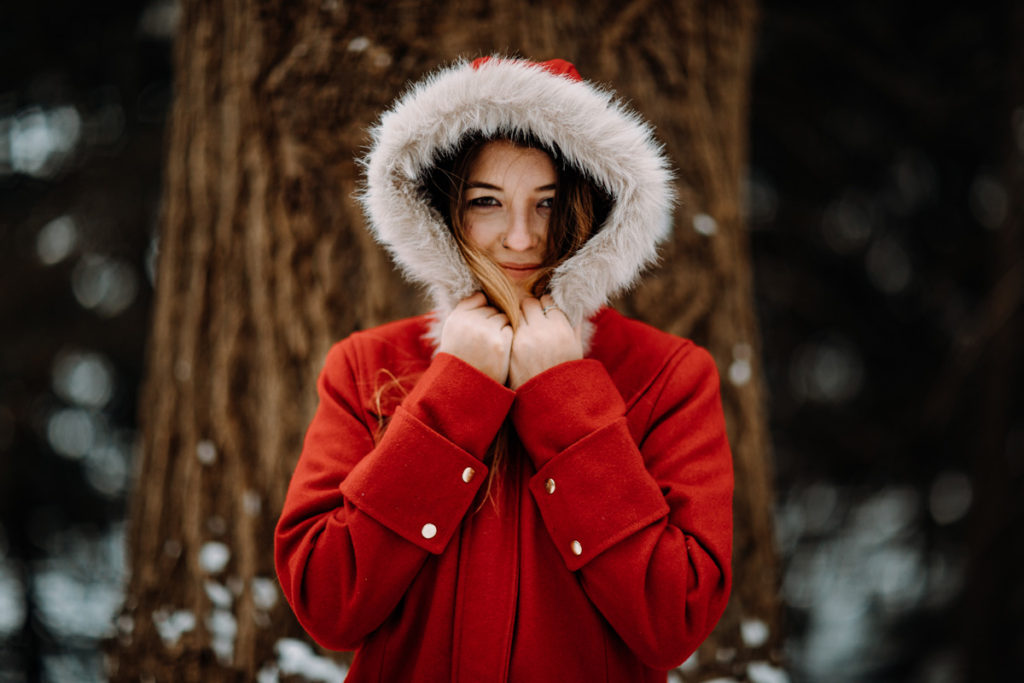 The simplest type of portrait you can take are those with natural light. Much of the time, these will be taken outside, but there is ample opportunity to get a natural light portrait by a window or well lit room. Natural light photographers, as you might imagine, prefer this approach as it means they only really need to learn how to work with the sun – not artificial flash and video light set ups.
The simplest type of portrait you can take are those with natural light. Much of the time, these will be taken outside, but there is ample opportunity to get a natural light portrait by a window or well lit room. Natural light photographers, as you might imagine, prefer this approach as it means they only really need to learn how to work with the sun – not artificial flash and video light set ups.
Personally, natural light photography is our preference as professional photographers. It can be difficult to replicate the look of real light. If you are shooting on an overcast day or during Golden Hour (around sunset and sunrise each day), the light is especially perfect for portraits.
Studio Portraits
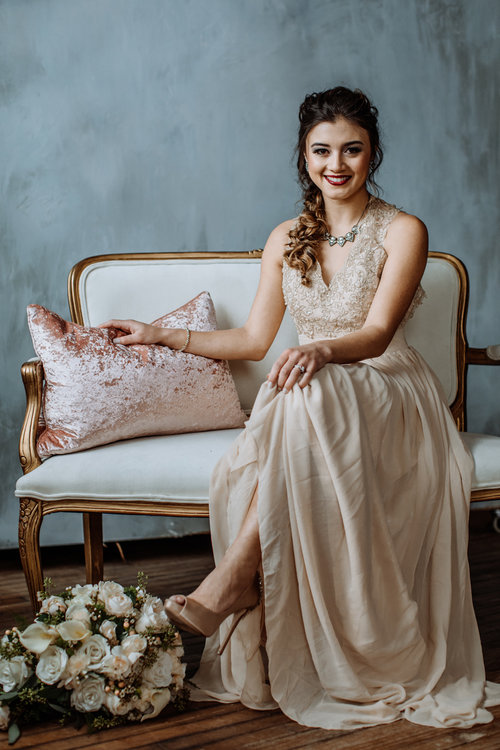
Portraits taken inside of a studio, like you might imagine when rolling up to Wal-Mart’s photo center for some family photos, are a lot more formal. Generally speaking, there is a lot of equipment around and the space is specifically setup to take portrait pictures. Headshots, senior pictures, family shots…these are all the norm in studio environments.
The look of studio portraits has a tendency to be more formal and less artistic. That’s not to say it isn’t an art in itself – but the goal is often very different.
Since these types of portraits take place inside and need to be consistent from one photo to the next, using additional photography equipment to help shape the light is essential. This means the addition of static lights and/or flashes. When used effectively, you can create some really stunning portrait photos.
A Range of Subjects
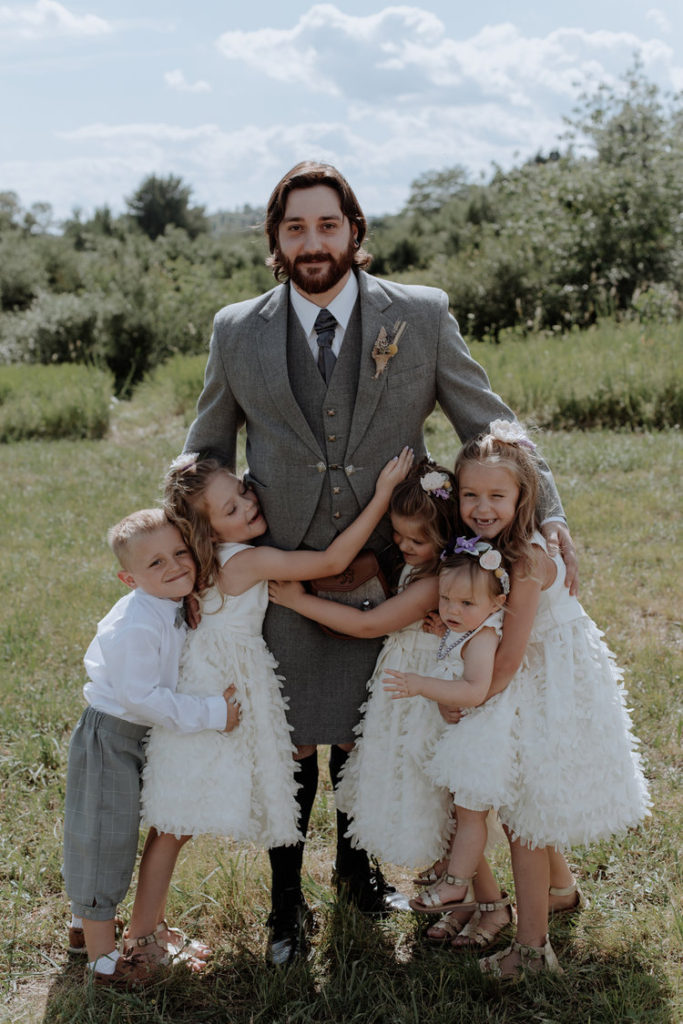
It’s important to keep in mind that “portrait photography” takes many forms. While our first thought goes to picturing a solo headshot, we also are experienced with shooting a range of portraits. Some of these include:
- couples portraits
- family portraits
- pet portraits
- newborn portraits
- maternity portraits
- wedding portraits
While the gear used in any of these situations will be pretty consistent, the techniques for capturing a great shot may need to be changed up. If you are interested in getting educated on more specific portrait types, be sure to use our website’s search function to find articles we’ve put together on these topics.
For more reading, check out our Signature Edit’s The Couples Candid Posing Guide Review
Our Approach to Putting Together These Gear Lists
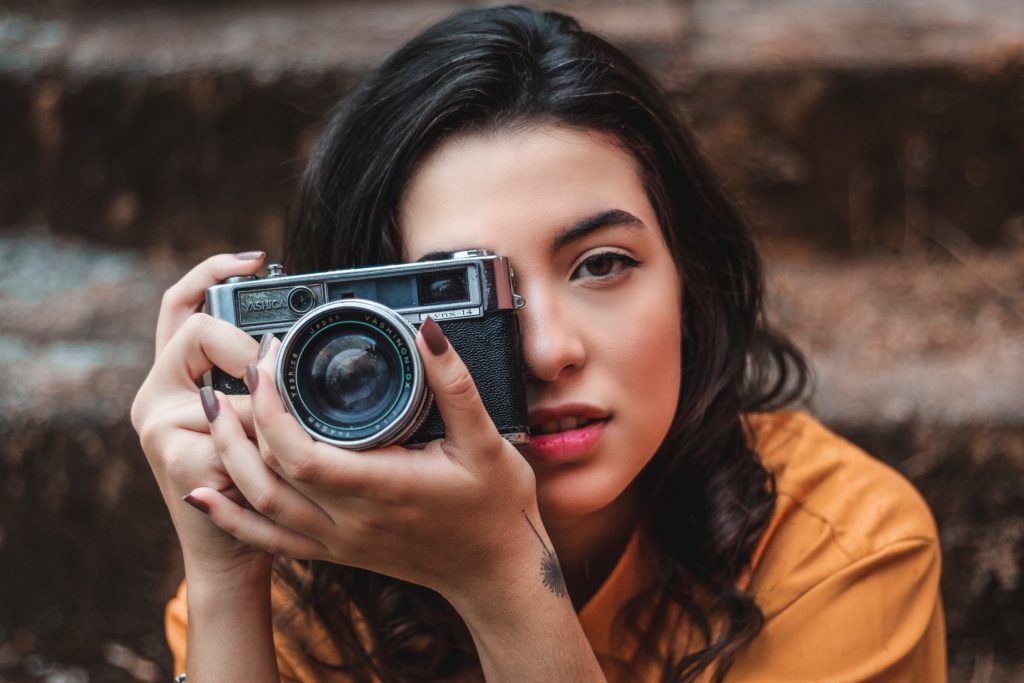 Before we give our portrait photography equipment for beginners recommendations, we want to briefly discuss the thought process that went into putting these together. We want you to feel like these suggestions can actually be valuable to you making a decision whether or not to buy certain pieces of equipment.
Before we give our portrait photography equipment for beginners recommendations, we want to briefly discuss the thought process that went into putting these together. We want you to feel like these suggestions can actually be valuable to you making a decision whether or not to buy certain pieces of equipment.
As a general rule, we are assuming that as a beginner photographer, you have very limited photography experience.
This may even be the first camera you are buying!
With this in mind, we’re going to expect you probably don’t want to drop thousands of dollars into photography at this time. As such, our recommendations will be for beginners with a budget in mind.
Our suggestions are all based on our personal experience using certain pieces of equipment OR information we have gathered from reading user reviews.
We hope all of these things combined give you some comfort in knowing the products suggested throughout the rest of this post can be trusted as great options for the starting portrait photographer!
Portrait Photography Equipment for Beginners – Natural Light Options
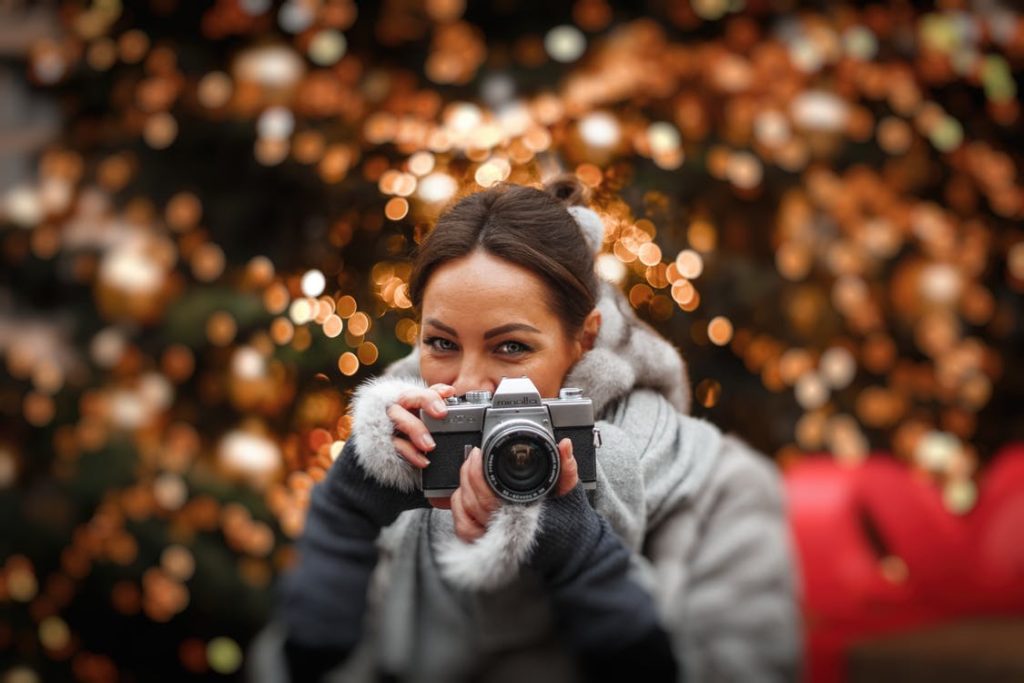 As we mentioned earlier in this post, portrait photography equipment when you are planning to just use natural sunlight is really simple.
As we mentioned earlier in this post, portrait photography equipment when you are planning to just use natural sunlight is really simple.
You can get by in most situations with just a camera body and lens.
In some cases, you may want to incorporate a tripod and/or light reflector to have more control over the lighting in your portrait, but these are not required purchases.
It’s worth noting, some of the cameras we recommend come packaged in kits that include things like memory cards, flashes, carrying bags, cleaning equipment, and so on. We link to the best deals we could find on Amazon in the below links, though of course will recommend you do additional research as prices and kits change from time to time.
Camera Bodies – DSLR
The qualities of a great camera body are simple.
You want a body that enables high resolution images to be outputted, performs well in low light shooting conditions, and holds up to regular use.
Fortunately, most beginner cameras do well these days in all of these areas!
Of course, the quality won’t be nearly as high as expensive pro gear such as the Canon 5D Mark IV that we use, but these will still do a great job for beginners.
- Canon EOS Rebel T6 DSLR Camera
- Canon EOS Rebel T6i DSLR Camera
- Canon EOS Rebel SL2 DSLR Camera
- Canon EOS 80D DSLR Camera
- Nikon D3400 DSLR Camera
- Nikon D3500 DSLR Camera
- Nikon D5300 DSLR Camera
- Nikon D5600 DSLR Camera
- Nikon D7200 DSLR Camera
- Sony a68 Translucent Mirror DSLR Camera
- Sony A77II DSLR Camera
Mirrorless Cameras
- Canon EOS M50 Mirrorless Digital Camera
- Canon EOS M100 Mirrorless Digital Camera
- Sony Alpha a6000 Mirrorless Digital Camera
- Sony Alpha a6300 Mirrorless Digital Camera
- Sony Alpha a6400 Mirrorless Digital Camera
- Sony Alpha a7IIK Mirrorless Digital Camera
- Olympus OM-D E-M10 Mark II Mirrorless Digital Camera
- Panasonic Lumix G7 Mirrorless Digital Camera
- Panasonic Lumix GX85 Mirrorless Digital Camera
- Fujifilm X-A5 Mirrorless Digital Camera
- Fujifilm X-T20 Mirrorless Digital Camera
- Fujifilm X-T100 Mirrorless Digital Camera
Lenses
There are two key things that go into a great portrait lens.
First, the focal length needs to be just right. We normally prefer 35mm to 85mm for portraits (though longer lenses can work just fine too!). We recommend lenses in this range because they tend to be the most flexible – usable both indoor and outside without much limitation.
Second, having a lens that can be shot “wide open” is ideal for portraits. As you can see below, most of these recommended lenses can be shot as low as f/1.8. When shooting as low as this, you are able to really separate your portrait subject from the background. This creates the blurry background effect – also known as “bokeh”.
- Canon EF 50mm f/1.8 STM Lens
- Canon EF 85mm f/1.8 USM Medium Telephoto Lens
- Nikon AF-S Nikkor 50mm f/1.8G Lens
- Nikon AF-S DX NIKKOR 35mm f/1.8G Lens
- Nikon AF S NIKKOR 85mm f/1.8G Fixed Len
- Sony – E 50mm F1.8 OSS Portrait Lens
- Sony SEL85F18 85mm F/1.8-22 Medium-Telephoto Lens
- Olympus M.ZUIKO Digital ED 45mm F1.8 Lens
- Olympus M.ZUIKO Digital ED 75mm f1.8 Lens
- Panasonic Lumix 42.5mm f1.7 Lens
- Fujinon XF35mm f2 R WR Lens
- Fujinon XF56mm f1.2 R Lens
Memory Cards
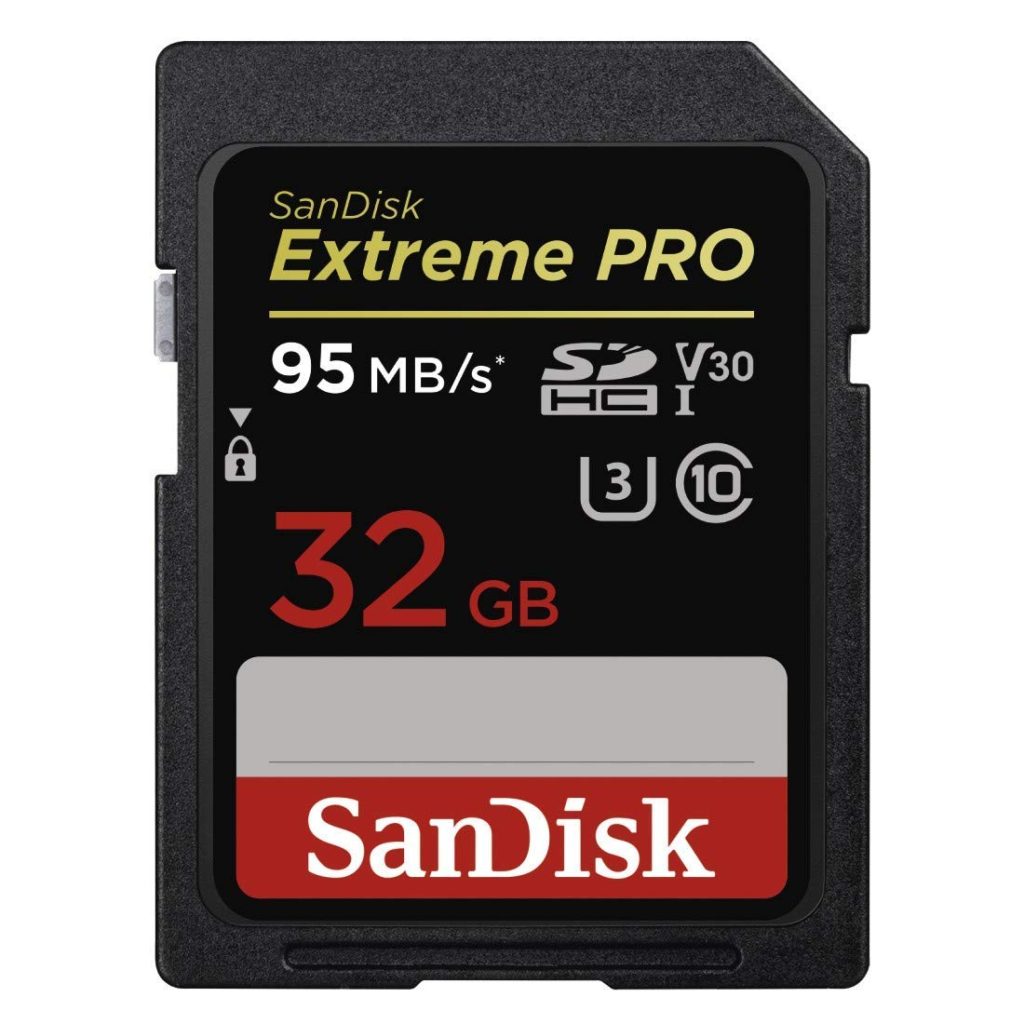
Your digital camera will require a memory card to store the photos you are taking. Many starter kits actually come with a few of these, so it’s worth checking to see if the camera you are looking to buy includes one already!
In our experience, memory cards are not all made the same. If you are just a hobbyist shooting for yourself, it may not matter too much. However, if write speed and reliability are important to you, we’d highly suggest the SanDisk Extreme Pro line of memory cards.
Tripods (Optional)
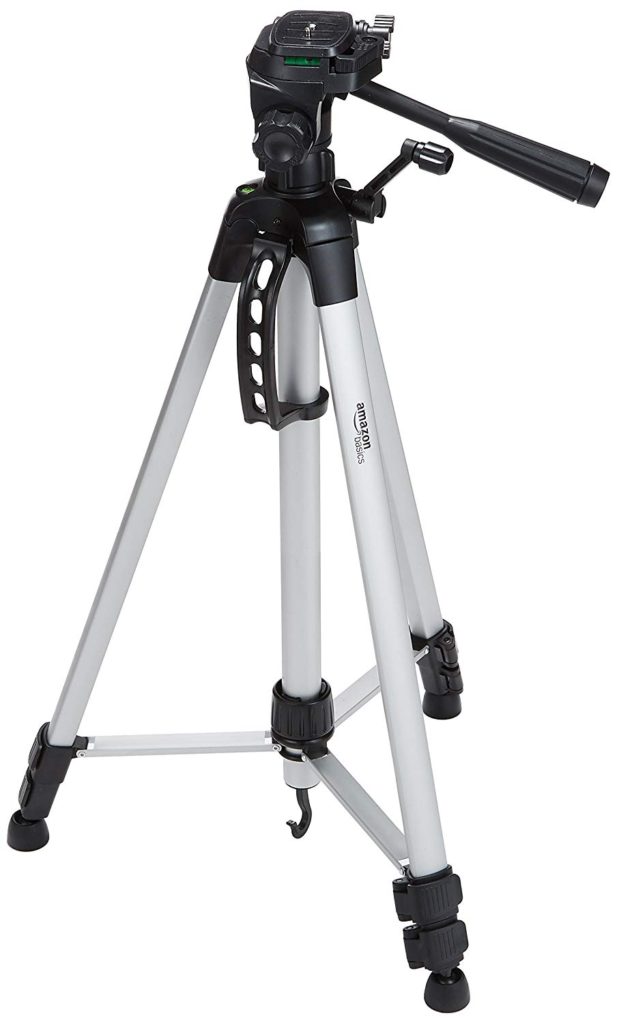
A tripod can be used by portrait photographers to stabilize the camera. This can, in turn, translate into sharper images as it will reduce the amount of camera shake that occurs when taking photos regularly. Of course, one of the downsides of tripods is having to lug them around and set them up. We don’t normally use tripods for portraits (we do, however, use them for landscape photography) as our style is much quicker as we move from location to location.
For beginner photographers, a simple and cheap tripod will be sufficient such as AmazonBasics 60-Inch Lightweight Tripod. If you are planning to do portraits in a more rugged location (like Iceland where the weather is constantly changing), you might want to consider a more heavy duty tripod for additional support such as the Geekoto Tripod.
Reflectors (Optional)
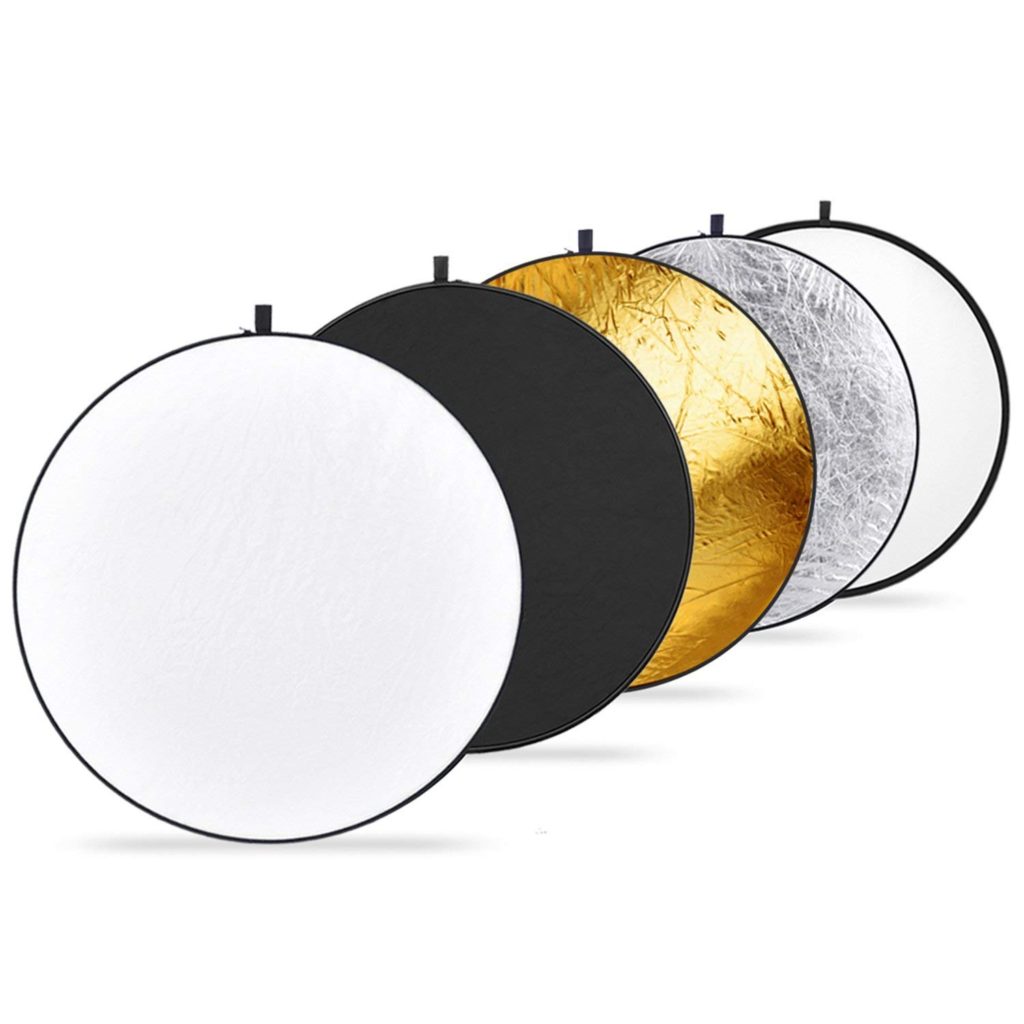
A photography reflector is a tool that can be used to bounce fill light (from the sun or a flash) to fill in shadows on a portrait subjects face. This isn’t totally essential as there are plenty of ways to take great portraits without one. However, a light reflector is really designed to make locations that would otherwise be less than ideal for portraits better.
We don’t use reflectors too much in our portrait photography, however we do take one out from time to time. Often, we’ll use it to mask bright sun. On occasion, we will also use one to bounce sunlight to fill in shadows for a more flattering image. Fortunately, reflectors are very inexpensive and you can get one like the Neewer 43-inch 5-in-1 Collapsible Multi-Disc Light Reflector that is really multi-purpose.
Related read: Digital Photography School’s eBook Portraits: Making the Shot teaches you how to take portraits with the “wow factor.”
Portrait Photography Equipment for Beginners – Studio Options
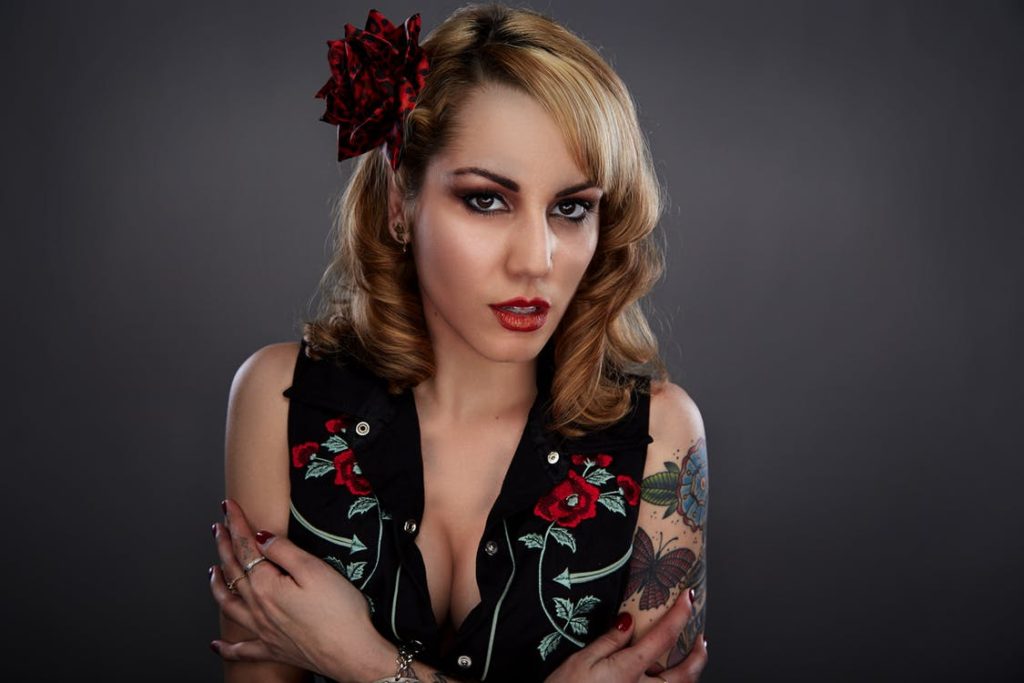
Now that we’ve covered all the basic portrait photography equipment for beginners, it’s time to shift our attention to studio portraiture. By this point, we’ll assume you’ve already decided on what camera and lens setup you want to work with. Whether shooting outside in natural light or in a studio environment, the camera you use will be the same. What will change is the light you are using!
Flashes
One of the first “go to” purchases for studio portrait photographers are flashes.
In our little world, flash photograph was scary at first. While picking up a camera and taking pictures is pretty intuitive, using a flash requires you to really think about the shot you are taking – and really requires more of a commitment to photography as a science and art to get the shots you want.
Related: A Short Guide to 4 Lighting Scenarios for Photographers
Fortunately, a good flash can make this process easy. No matter the flash you get, starting in TTL mode (the auto flash mode) is a great way to start experimenting. Frankly, we use TTL mode most of the time when shooting wedding photography due to the ever changing environment, so it’s even great for professionals.
Some great starter flashes include:
- YONGNUO YN968N Wireless Camera Flash
- YONGNUO YN600EX-RT II Wireless Flash Speedlite
- Canon Speedlite 430EX III-RT Flash
- Canon Speedlite 600EX II-RT
- Godox TT600 Flash Speedlite
- Godox V850II Ving GN60 2.4G 1/8000s HSS Camera Flash Speedlight
With most beginner flashes, if you want to use multiple flashes at once, or shoot with an off camera flash – you will also need to by a pair of transceivers. The only type we have used and trust are PocketWizard Plus IV’s.
While the quality of the light coming from these flashes is solid, to a novice the menu systems can be a little overwhelming. Early on in our photography career when we were using a mixture of Yongnuo and Canon speedlites, we actually decided to upgrade to Profoto A1 flashes because they are far more intuitive to use. Yes, they are far more expensive, but they are also much easier to use. This is frustrating because we’d hope a product would come along with the simplicity of these for beginners, but unfortunately that doesn’t seem to be the case yet.
Static Light (Alternative)
While the preference of many portrait photographers is to use flash for studio portraits, there are plenty of people who have decided to just use static light sources.
Most commonly used for videography, static lights are a form of continuous lighting that can work just as well as any flash when used appropriately. Compared to flash, static lights are much easier to use – just turn it on and call it a day. For a beginner, a simple light like the Viltrox VL-162T CRI95+ LED Video Light will work well.
Light Diffusers
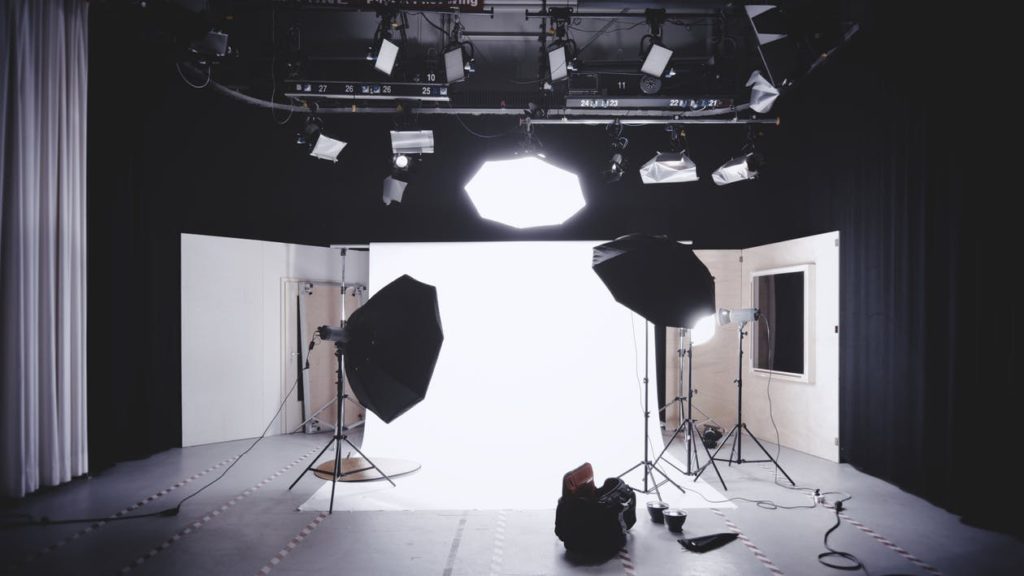 If you have ever wondered how professional photographers can make flash photography look good, then you’ll be happy to find out it’s through the use of softboxes and other diffusers.
If you have ever wondered how professional photographers can make flash photography look good, then you’ll be happy to find out it’s through the use of softboxes and other diffusers.
How do these work?
It’s similar to how clouds impact sunlight when we’re outside. On a clear day, the light can be pretty harsh (it’s what causes us to squint because it’s so bright and in-our-face). When clouds are present, it helps to disperse the light and makes it softer. For portraits, this softer looking like tends to be more flattering. While some photographers do like the harsh flash look, most tend to prefer a softbox look.
On-Camera Flash Diffusers
Off-Camera Flash Diffusers
- Neewer 32 inches Octagon Softbox
- Neewer 700W Professional Photography 24×24 inches Softbox
- Neewer 33″ 83cm Photography Studio Flash Translucent White Soft Umbrella
For off camera flash photography, you will need to additionally purchase flash stands. While there are expensive options out there, for beginners who are likely shooting in their homes or similar low pressure environments, a couple of cheap stands will do the trick!
Portrait Backdrops
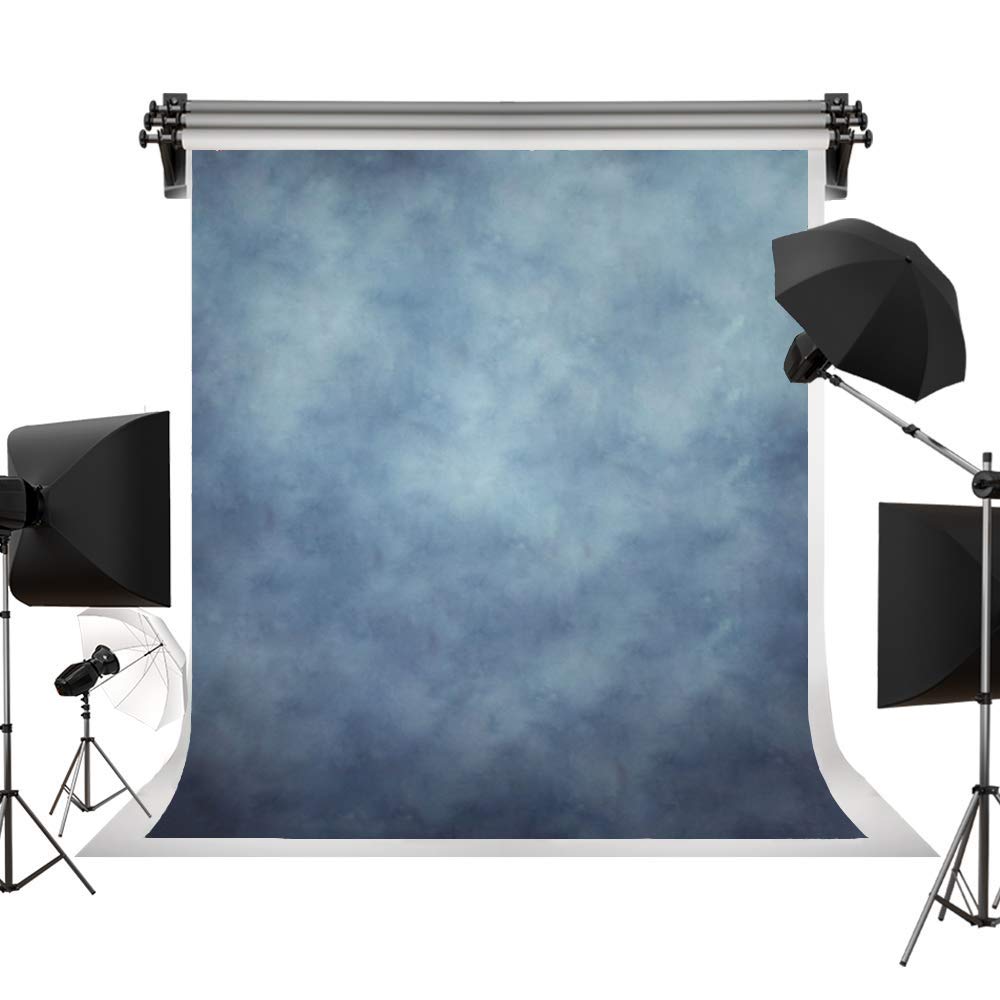
The beauty of photography is that you can find a backdrop anywhere.
One of the reasons we love outdoor photos is because we can arrange our subject in front of a background that is eye catching. Just go to a local park and shoot with some trees or flowers in the background, and the shot makes itself. Become more adventurous and find yourself hiking to some remote waterfall to use as a background – and the effect can be really stunning.
Of course, in studio portrait photography can also feature some great backdrops. You can certainly go the DIY route and create your own, or consider purchasing one.
One important thing to keep in mind (and something we know people forget), but if you only need a great backdrop for what you are framing. If you’re taking a headshot – a 2’x2′ piece of material will suffice to give the same effect.
Learn How to Take Beautiful Portraits!
Now that we’ve laid out some great portrait photography equipment for beginners, we’ll leave it to you to make the decision on what gear is right for you.
Once you’re setup, it can be incredibly useful to have some easy photography education resources. Below we’ve included a list of articles we’ve put together that will help you take better portraits.
Feel free to bookmark these pages and come back to them down the line.
- What is the Best Aperture and Focal Length for Portraits?
- How to Shoot Portraits in Ugly Locations
- The Ultimate Guide to Couples Portrait Photography
- 101 Digital Photography Tips – A Guide to Taking Great Photos
If it’s easier for you, sign up for our newsletter to receive occasional emails about great new posts too!